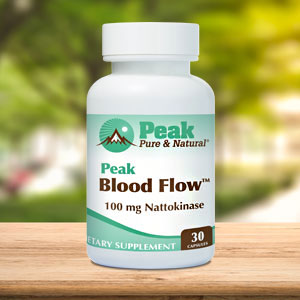Get Easy Health Digest™ in your inbox and don’t miss a thing when you subscribe today. Plus, get the free bonus report, Mother Nature’s Tips, Tricks and Remedies for Cholesterol, Blood Pressure & Blood Sugar as my way of saying welcome to the community!
Glaucoma joins growing list of statin side effects

There are tens of millions of people in the U.S. taking the cholesterol-lowering medications known as statins to prevent heart disease.
This could be because the U.S. Preventative Services Task Force advises healthcare professionals to prescribe statins in patients ages 40 to 75 who have at least one risk factor for heart disease, such as diabetes or dyslipidemia, and an estimated 10-year cardiovascular risk of 10 percent or more.
However, there is a dark side to statins. Their side effects can include severe muscle pain and kidney damage. And evidence suggests they can double your risk of dementia and triple your risk of diabetes.
Plus, statins have been linked in recent studies to cataracts. In fact, one study suggests they can as much as quadruple your risk!
And that’s not the only vision issue that’s been connected to statin use….
Statins and glaucoma
Researchers conducted a cross-sectional, population-based study of over 79,000 patients ages 40 and older in the All of Us (AoU) Research Program to see whether there was an association between statin use and glaucoma. This eye disease can damage the optic nerve and lead to blindness if left untreated.
According to Dr. Victoria Tseng, of the David Geffen School of Medicine at the University of California Los Angeles, high cholesterol can impact circulation quality throughout the body, with poor blood circulation to the optic nerve worsening glaucoma.
“Statins work to lower cholesterol levels so the question is whether they can also alter the risk of glaucoma,” Tseng says.
A large study published in 2012 tied use of statins for two years to a decreased risk of progressing from glaucoma to open-angle glaucoma compared to those who received no statin therapy.
The results of the newer study weren’t as rosy…
Tseng and her colleagues separated the results of their study based on whether participants had optimal, near-optimal, borderline high, high or very high levels of LDL.
But not only did they find a link between statin use and a higher likelihood of glaucoma in adults with high cholesterol — but even in those whose LDL cholesterol (the “bad” kind) was in the optimal range.
Tseng observes that those with healthier LDL levels may have reached them by using statins. Statin use was significantly associated with glaucoma among participants with optimal and high levels of LDL. There was no association in the other LDL level groups, Tseng notes.
There was also a positive connection between statin use and the prevalence of glaucoma in participants aged 60 to 69 years.
A complicated picture
“Most previous studies have suggested no association or a protective association between statins and glaucoma,” Tseng tells MedPage Today. “Our finding of increased glaucoma in statin users suggests that things may be more complicated than previously discussed.”
“It could be that statin users had worse hyperlipidemia, which is why they needed statins,” she adds. “So, the statins could be a proxy for worse circulation to the optic nerve.”
Tseng says more research is needed to understand whether the statins themselves might be responsible for the higher glaucoma rates. This would include exploration of associations between different types of lipid measurements, vascular circulation in the optic nerve and any changes that result with statin use.
For now, Tseng recommends ophthalmologists check the cardiovascular status of patients and their use of related medications. “These may all be factors contributing to glaucoma risk either positively or negatively and may make the glaucoma disease not behave as typically as expected,” she says.
In the meantime, if you’re using statins, it’s probably a good idea to check your glaucoma risk. Some factors putting you at higher risk include:
- Being over age 60
- Being of African, Asian, or Hispanic descent
- Having relatives with glaucoma
- Being very nearsighted (myopic) or far-sighted (hyperopic)
- Using steroid medications
- Having high eye pressure
- Having a thin central cornea
- Having had an eye injury
Suppose you have any of these risk factors and are on a statin. In that case, you may want to talk to your doctor about switching to a different medication. But medication may not be your only choice. You may be able to adjust your cardiovascular risk with lifestyle changes such as following a healthy diet, exercising regularly, losing weight and not smoking or drinking alcohol.
Editor’s note: There are perfectly safe and natural ways to decrease your risk of blood clots including the 25-cent vitamin, the nutrient that acts as a natural blood thinner and the powerful herb that helps clear plaque. To discover these and other secrets of long-lived hearts, click here for Hushed Up Natural Heart Cures and Common Misconceptions of Popular Heart Treatments!
Sources:
Statin Use Linked to Higher Risk of Glaucoma — MedPage Today
Associations between Statin Use and Glaucoma in the All of Us Research Program — Ophthalmology Glaucoma
Glaucoma Risks — Glaucoma Research Foundation
Lipophilic statin use linked to increased risk of dementia — EurekAlert!
Association of Common and Rare Genetic Variation in the 3‐Hydroxy‐3‐Methylglutaryl Coenzyme A Reductase Gene and Cataract Risk — Journal of the Amerian Heart Association














